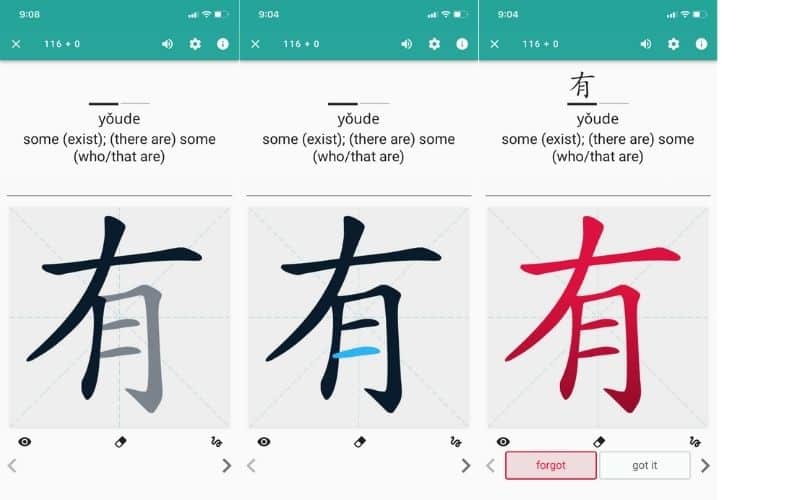One of my long-term projects is learning Mandarin. An element of the language that many people find intimidating is the writing system, in that is so different from many other languages. However, learning writing is one of the things I enjoy most: not only does it unlock many practical opportunities in communication, I find it a fascinating experience in itself, seeing the patterns and structures in what initially can seem like very abstract characters.
To have more than a surface level appreciation for this, practice is essential. I’ve used a variety of tools for language learning, and found writing is a difficult aspect to get a good balance for: either it is glossed over, or restricted to an unplanned regime of repetitive writing of characters. The best compromise I’ve found so far is Skritter.

Skritter fills a niche for me by focusing exclusively on reading and writing. Some longer words and multiple definitions are given, but the focus is on building fluency with characters, not grammar or usage. Spaced repetition is used to practice characters already learned, meaning those already mastered are reviewed only occasionally to maintain knowledge, while newer or poorly remembered characters are practiced more often to build mastery.
I find the mobile context is ideal for this kind of application. The learn and review stages are short enough (and can be varied in length) that it is a way to make use of otherwise dead time (waiting in a doctor’s office for example). The touch screen input is used to practice “drawing” characters, giving a feel for the stroke direction, size, location and order.
As much as I like Skritter, there are some caveats. First, it admittedly doesn’t do everything that a language learner would need, so it is likely part of a suite of tools one would use. That’s fine, but with a $100 annual subscription for this app alone, that may put some people off. There are also limited references available: more definitions, example sentences, etc. would make it a more robust literacy tool. Finally, drawing characters with a fingertip is not the same as drawing them with a pen. For me this is fine since my objectives are to be able to read Mandarin but primarily write using technology. But for someone who wanted total native level fluency and writing ability, it’s probably too superficial.
Hi Joel,
Pleco is the app I use when I want to go deep into meanings; it’s dictionary choices along with practice and photo translation are awesome.
I looked at Anki before, although I don’t recall it having the same stroke order practice options as Skritter does. Anki seems to be the go to spaced repetition practice apps: from what I’ve read, it’s one of the most versatile for users to create their own practice decks, different media practice options, etc.
Issues of fees and costs are definitely a concern. Skritter, Duolingo and others seem to really target adult learners who can drop $100 subscription fees; as many will be using them as a side interest, how efficient they are is a good question (i.e. would they be useful for someone studying a language full time?). Even Anki deals with this: it’s free except for the iphone version, which is paid. My guess is that has a lot to do with the costs and logistics of hosting on the various app store platforms.
In my undergrad, I took an interest in learning Chinese as I thought it would have an immense impact on the communication present on the Internet in the future. Previously, I used Pleco to review the language most of the time. I also used Anki to review stroke orders as well. Anki is a free, open-source, and mobile-optimized flashcard software providing many of Skritter’s features. https://ankiweb.net/
I remember seeing Skritter during its initial release, so seeing how it has evolved over almost ten years is fascinating. I don’t remember the subscription fee being that large before. Having a large subscription fee puts it out of reach for many students globally. Your discussion points raise questions about how companies encourage and support open learning while having to pay for staffing, administration fees, and other miscellaneous costs.